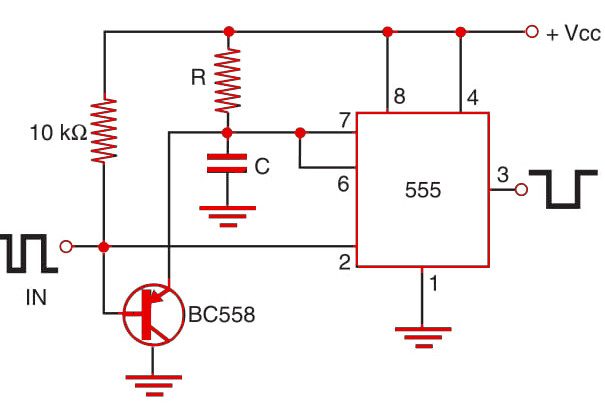
If one or more pulses are missing in this sequence, the output of the circuit passes for a brief time interval to the low level, generating a “flag” signal. This signal can be used to trigger an alarm or another circuit.
The circuit is shown in Figure 2 and is a monostable based in the 555 IC. R and C are calculated to provide the circuit with a time constant that is longer than the distance between two incoming pulses but shorter than the distance between two pulses. This means that the circuit will be retriggered by the next pulse before the end of the timing process, keeping the output high. If a pulse is missing, the time constant ends before the next pulse has arrived, and the output goes to the low level in an instant, producing the flag output signal.

The time constant is given by t = 1.1 × R × C, and R can be kept in the range between 1 kΩ and 1 MΩ.
The bipolar 555 can drain about 200 mA, but we also can build a CMOS version (TLC7555) that can drain and supply 200 mA. If the load needs more current, an output stage must be used such as the ones described in other articles in this section.



